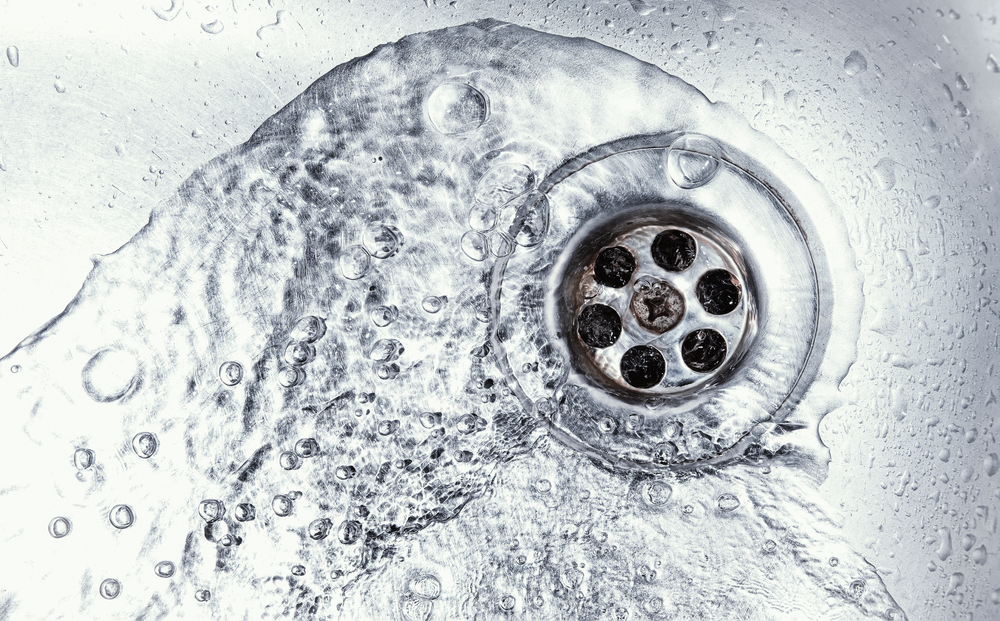Blocked drains and sinks can be quite troublesome. Utilize this thorough manual for swift DIY drain cleaning and unclogging using common household items in the United Kingdom.
Related Topics (Sponsored Ads):

Try Using a Plunger for Swift Initial Results in Clearing Drains
When dealing with a blocked or slow-draining sink in your kitchen, bathroom, or utility room, the quickest and simplest initial solution for DIY home drain clearing is to use a standard plunger. Start by filling the blocked sink halfway with hot water, ensuring that the drain opening is completely covered and submerged. Position the rubber plunger directly over the sink’s drain opening, ensuring a tight seal on all sides.
Once you’ve achieved a secure seal with the plunger, begin to vigorously plunge by using quick, forceful up-and-down movements repeatedly to create pressure and suction down the pipe. Continue plunging vigorously for 15-20 forceful repetitions. The force generated by these rapid and vigorous plunging motions can help dislodge and break up the clog, whether it’s composed of thick grease, accumulated food debris, or tangled hair. If the flow isn’t fully restored initially, repeat the plunging process diligently. Be cautious not to overfill the sink, as this can result in splashing dirty water. A simple plunger provides an effective initial solution for clearing blockages and offers immediate relief.
Opt for Liquid Chemical Drain Cleaners to Tackle Stubborn Clogs
If vigorously plunging a blocked sink or drain doesn’t completely break up the obstruction, the next step to consider is using a commercial chemical drain cleaner in liquid form. Useful liquid drain cleaning products like “One Shot Instant Drain Cleaner” can be easily purchased at affordable prices from any hardware store or home improvement retailer in the UK. These potent, dense liquid agents get to work by dissolving even tough blockages, stubborn hair masses, and grease obstructions through chemical reactions and loosening actions.
Make sure to carefully follow all manufacturer’s instructions regarding the appropriate amount of liquid drain cleaner based on the pipe size and the recommended waiting time before flushing and using the pipes again after application. Typically, it is recommended to apply half a bottle initially, allowing the cleaner to sit for at least 15 minutes to fully react before running hot water. Alternatively, mixtures of bleach and baking soda can be combined with hot water for a DIY chemical drain cleaning approach against persistent clogs. Never mix different chemical cleaners, as this can produce harmful fumes. When handling liquid drain cleaner products, always wear gloves and place an old towel around sinks to prevent splattering. Chemical drain cleaners offer an economical at-home solution for even the most challenging sink-clogging situations.
Try Drain Snaking for Deeper Pipe Blockages
When a sink clog persists beyond the initial bend in the drain trap, and standard methods like plunging and liquid drain cleaners have failed to provide relief, the next recommended approach to consider is a thorough drain snaking to clear out the blockage deeper within the pipes. You can easily obtain an affordable, flexible drain snake coil or auger from your local home improvement store. Insert the metal coiled end of the snake down the drain opening, pushing it as far as it will extend while twisting it clockwise.
Once you encounter resistance from an obstruction deeper within the pipe, twist the snake counter-clockwise to capture debris and slowly retract it to remove any dislodged material. Examine any grime that is extracted from the pipes and dispose of it properly. Always rinse the drain with boiling water after completing the snaking process. A drain snake typically has the reach to dislodge clogs lodged 6-10 feet down household pipes. Be careful not to scratch or scrape the interior of the pipes when inserting and twisting the drain snake. With regular practice, DIY drain snaking proves to be an effective solution for addressing deep-seated sink clogs beyond the trap.
Implement Preventative Measures to Reduce Sink and Drain Clogs
After successfully clearing any immediate sink drain clogs using plungers, drain cleaners, or snakes, there are straightforward preventive steps that homeowners in the UK can regularly adopt to minimize the recurrence of clogs and maintain smooth water flow. Install inexpensive metal or plastic sink drain screens on all easily accessible household sinks. These screens allow water to flow freely while capturing hair and small debris before they enter the pipes.
Additionally, avoid pouring fats, oils, and grease down any drains, as they can gradually accumulate and lead to significant blockages. Use small drain catchers in problematic areas to collect hair around sinks before it reaches the pipes. Weekly, pour some table salt or baking soda down the drains while flushing them with hot water to ensure a clear flow. When using garbage disposals, allow them to run for a sufficient duration after adding food waste to ensure thorough grinding of scraps before they are drained away. Practicing preventive maintenance helps prevent the inconvenience of dealing with blocked sinks or drains in the future.
In Conclusion
Addressing a completely clogged kitchen, bathroom, or any household sink or drain can be efficiently managed at home with essential tools and techniques. Always start with a series of forceful plunges using a standard plunger to promptly alleviate minor blockages. For more stubborn obstructions that persist, apply a commercial liquid drain cleaner product and allow it to chemically dissolve accumulated debris and grease. In cases of deep-seated clogs beyond the initial trap, cautiously use a drain snake to carefully navigate down the pipe and extract trapped debris. Lastly, adopt preventive measures such as utilizing drain screens, refraining from disposing of grease down the drain, and maintaining regular cleaning to reduce the likelihood of future clogs. With these DIY methods, homeowners in the UK can confidently tackle drain issues themselves and restore proper flow using readily available items.






